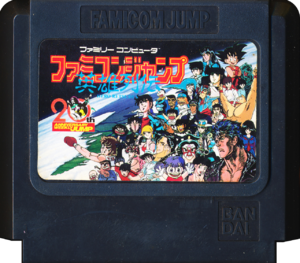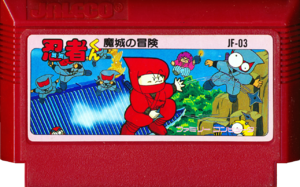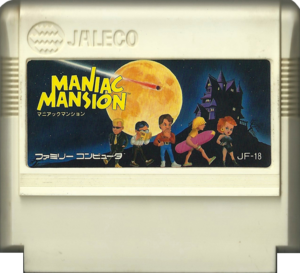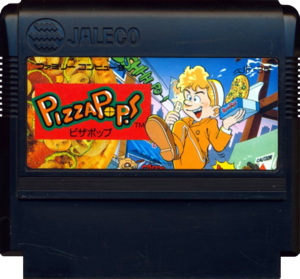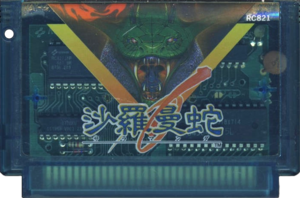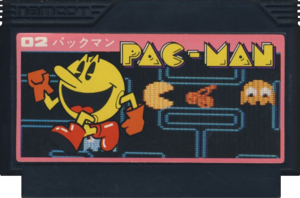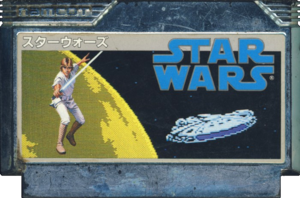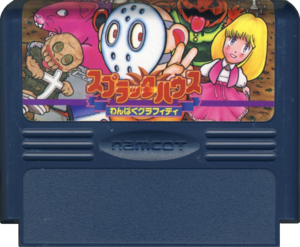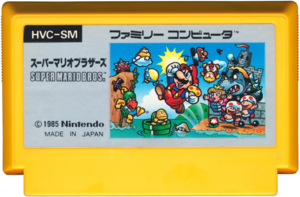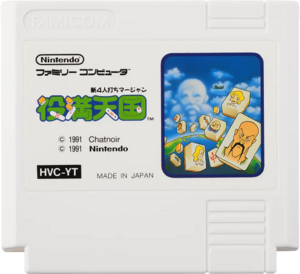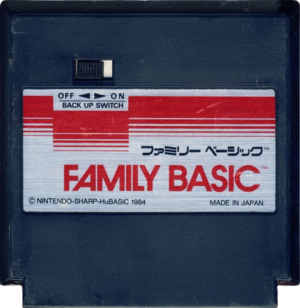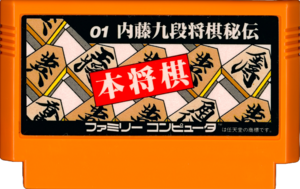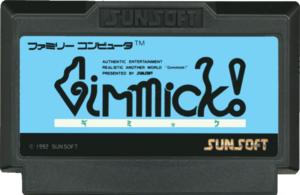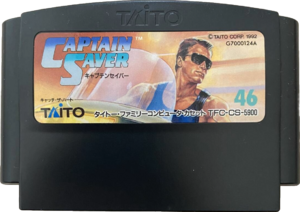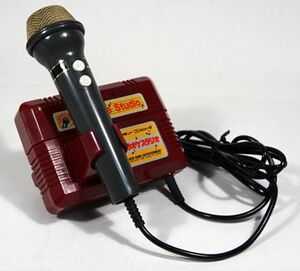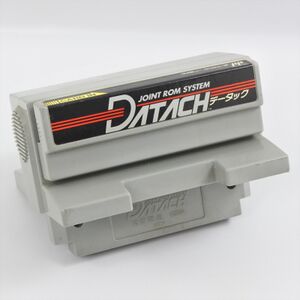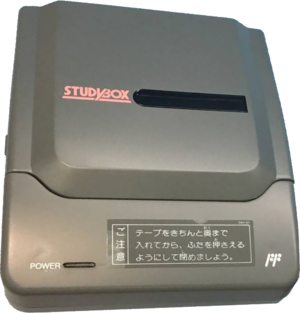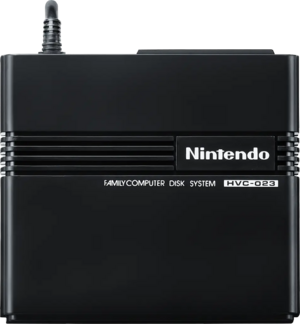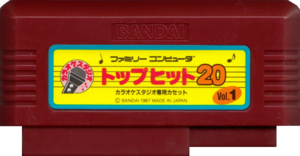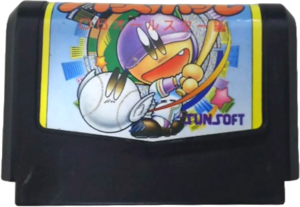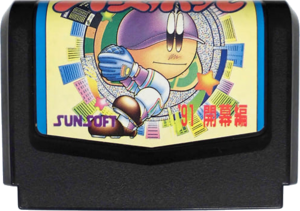Family Computer cartridge variations: Difference between revisions
(StudyBox) |
mNo edit summary |
||
| Line 1: | Line 1: | ||
[[File:Family Computer. | [[File:Family Computer.png|thumb|right|The [[Family Computer]], also known as the [[Famicom]].]] | ||
While most companies manufactured their cartridges through Nintendo, some larger publishers manufactured their own. These variations gave their games a personality and brand unique to the publisher. Manufacturing away from Nintendo also gave these companies greater freedom in the content they could include on packaging, while smaller companies had to follow Nintendo's stricter content guidelines. Later in the Famicom's life, taller cartridges were introduced to fit more powerful co-processors and larger ROMs. Nintendo also pushed for a switch over to OEM manufacturing for more control over content being released, and contracts were changed to reflect this.<ref>''https://note.com/syosin_kai/n/n4025bee10a56'', 特別編 ファミコンカセットのライセンスの歴史を調べていったらおかしなことに気がついた, 初心カイ</ref> Once the [[Super Famicom]] arrived, all cartridges were manufactured by Nintendo and standardized, with some having a port at the top for [[Satellaview]] functionality. | While most companies manufactured their cartridges through Nintendo, some larger publishers manufactured their own. These variations gave their games a personality and brand unique to the publisher. Manufacturing away from Nintendo also gave these companies greater freedom in the content they could include on packaging, while smaller companies had to follow Nintendo's stricter content guidelines. Later in the Famicom's life, taller cartridges were introduced to fit more powerful co-processors and larger ROMs. Nintendo also pushed for a switch over to OEM manufacturing for more control over content being released, and contracts were changed to reflect this.<ref>''https://note.com/syosin_kai/n/n4025bee10a56'', 特別編 ファミコンカセットのライセンスの歴史を調べていったらおかしなことに気がついた, 初心カイ</ref> Once the [[Super Famicom]] arrived, all cartridges were manufactured by Nintendo and standardized, with some having a port at the top for [[Satellaview]] functionality. | ||
Revision as of 23:45, 19 May 2024
While most companies manufactured their cartridges through Nintendo, some larger publishers manufactured their own. These variations gave their games a personality and brand unique to the publisher. Manufacturing away from Nintendo also gave these companies greater freedom in the content they could include on packaging, while smaller companies had to follow Nintendo's stricter content guidelines. Later in the Famicom's life, taller cartridges were introduced to fit more powerful co-processors and larger ROMs. Nintendo also pushed for a switch over to OEM manufacturing for more control over content being released, and contracts were changed to reflect this.[1] Once the Super Famicom arrived, all cartridges were manufactured by Nintendo and standardized, with some having a port at the top for Satellaview functionality.
Nintendo Entertainment System cartridges were all manufactured by Nintendo as they had greater control outside of Japan.
60-pin cartridges
| Type | Manufacturer | Description | Cartridge |
|---|---|---|---|
| Ridged | Bandai | A standard-height cartridge with ridges on the sides. The top corners are rounded, and the Bandai wordmark is molded on the top edge. The back of the cartridge has the Bandai logo, the year of manufacture, and MADE IN JAPAN in a small box at the bottom. The majority of these cartridges have labels on the top. | |
| Family Trainer | Bandai | Tall cartridges denoting games that use Bandai's Family Trainer accessory. These carts have "Family Trainer" stamped above the label and Bandai's logo stamped into the bottom right of the cart. | |
| Famicom Jump | Bandai | Identical to the Family Trainer cartridges but with "Famicom Jump" stamped above the label instead. Used for Famicom Jump: Hero Retsuden and Famicom Jump II: Saikyou no 7 Nin. | |
| Standard | Irem | Regular dimensions, small Irem logo stamped into the top. | |
| LED | Irem | Earlier Irem cartridges include a power led at the top of the cartridge, below an Irem logo stamp. These carts also have a square hole on the left and are the same cream color as the original Famicom console. | |
| Standard | Jaleco | Regular dimensions, Jaleco logo stamped into the top left. | |
| Tall | Jaleco | Tall cartridges used for later releases, the stamped logo is much prominent on the top left and is the only Famicom cartridge variant to come with cartridge covers. This style of cartridge only came in black and white. | |
| Standard | Konami | Regular height with a large end label. Ridges towards the top of the cartridge. Features a small hole on the left side with an unknown purpose. | |
| Translucent | Konami | Salamander is only licensed Famicom cartridge that is translucent. The design itself is identical to the standard Konami cartridge but colored cyan. | |
| Tall | Konami | Tall cartridges used for later releases. Features a frame around the box art with an imprinted Konami logo | |
| Standard (Namcot) | Namco | Standard cartridge used for early Namco releases. They have an end label with art specific to each game. The Namcot logo is embedded on the top left. Namcot was the name of Namco's home console software division. | |
| Standard (Namco) | Namco | Identical to the standard Namcot cartridge design but the embedded logo on the top left says Namco instead of Namcot. Used for Choujikuu Yousai Macross. | |
| Gold | Namco | Gold cartridges used for Super Xevious: GAMP no Nazo and Dragon Buster. Uses the same standard Namco cartridge design. | |
| Silver | Namco | A silver cartridge used for Star Wars and is similar to the previous gold cartridges. Uses the same standard Namco cartridge design. | |
| Tall Navy Blue | Namco | Tall cartridges used for later Namco releases. | |
| Standard | Nintendo | Standard cartridge used by Nintendo and third parties. Has 2 small, square holes at the top. Same dimensions as a cassette case. | |
| Tall | Nintendo | Tall cartridge used by Nintendo and third parties. Meant to resemble NES Game Paks. All Koei games used this form factor. | |
| Family BASIC | Nintendo | A unique tall cartridge design used for Family BASIC and Family BASIC V3. The back of the cartridge has a slot for two AA batteries which is used for the switch on the front to save program data directly onto the cartridge. | |
| SETA | SETA | The only uniquely manufactured cartridge by SETA for Hon Shougi: Naitou Kudan Shougi Hiden. All other SETA cartridges used standard Nintendo cartridges. | |
| Standard | Sunsoft | White cartridge with regular dimensions with the Sunsoft logo stamped prominently at the top of the cartridge. Features 2 small holes at the top like Nintendo's standard cartridges. Later releases were made with black plastic instead of white. | |
| Standard | Taito | Standard height with ridges at the top. Features the old logo stamped into the top right. Used until 1988. | |
| New | Taito | Used the new logo introduced in 1988. The bottom right of the label is taken out to place a stamped logo into the cartridge. | |
| Arched | Taito | Taller variation with an arched top. Only used for 3 very late releases in 1993 which include Captain Saver, Bubble Bobble 2, and The Jetsons: Cogswell's Caper!. The design of the cartridge looks similar to what would be later used for the Nintendo 64. |
Adapter cartridges
| Type | Manufacturer | Description | Cartridge |
|---|---|---|---|
| Karaoke Studio | Bandai | A special cartridge designed for Karaoke Studio with it's own hard-wired microphone. It has an expansion slot on the back to insert specially designed cartridges. | |
| Datach Joint ROM System | Bandai | The Datach Joint ROM System cartridge adapter. It has a barcode reader on the front of the adapter used for transmitting barcode data into supported Datach software. | |
| StudyBox Model 1000 | Fukutake Shoten | The StudyBox Model 1000 adapter used to read audio cassette tapes. The Model 1000 was only made available for rental use for students registered to the Shinkenzemi Elementary School Course. | |
| StudyBox SBX-01 | Fukutake Shoten | The StudyBox SBX-01 adapter used to read audio cassette tapes. This is an updated model of the StudyBox Model 1000. The SBX-01 model was sold rather than rented. | |
| Q-Ta Adapter | Konami | Cartridge adapter for smaller Konami Q-Ta cartridges. | |
| RAM Adapter | Nintendo | Contains RAM for the Family Computer Disk System to communicate with the main unit, as well as some extra sound hardware. Required for the use of the Disk System. | |
| Network System | Nintendo | The Family Computer Network System cartridge adapter that uses a ROM card format similar to HuCards for PC Engine. Has a modem to connect online. | |
| Nantettatte!! Baseball | Sunsoft | Tall round cartridge used for Nantettatte!! Baseball. The back of the cartridge features its own cartridge slot. |
Expansion cartridges
| Type | Manufacturer | Description | Cartridge |
|---|---|---|---|
| Datach Cartridge | Bandai | Smaller cartridges designed to fit into the Datach Joint ROM System. They have long indents below the not-quite-rectangular label. They are more square in shape than normal Famicom cartridges. | |
| Karaoke Studio Expansion Cartridge | Bandai | Smaller expansion cartridges for Karaoke Studio. These add additional songs to the base game. Only two expansion cartridges were released which include Senyou Cassette Vol. 1 and Senyou Cassette Vol. 2. | |
| Q-Ta Cartridge | Konami | Smaller cartridges for the Konami Q-Ta adapter. These are primarily edutainment games not targeted for a general market. The adapter provides common hardware for kanji support and a VRC5 mapper chip, a mapper unique to the Q-Ta adapter. [2] | |
| Nantettatte!! Baseball Expansion Cartridge | Sunsoft | Smaller expansion cartridges used for Nantettatte!! Baseball. These were used to update the statistics in the base game. Only two expansion cartridges were released in 1991 those being OB All-Star Hen and '91 Kaimakuban. |
References
- ↑ https://note.com/syosin_kai/n/n4025bee10a56, 特別編 ファミコンカセットのライセンスの歴史を調べていったらおかしなことに気がついた, 初心カイ
- ↑ https://famicomworld.com/system/converters/konami-q-famicom-adaptor/, Konami Q太 Famicom Adapter, Famicom World



